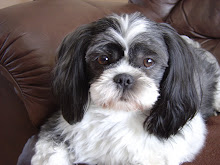 Long-haired Cymric
Long-haired Cymric Nearly Tailless Manx
Nearly Tailless Manx
1900 Manx Silverwing cat
The Manx (Kayt Manninagh or Stubbin) is a cat that originated sometime before the 1700's on the Isle of Man. Their exact origin is unknown, but folk lore claims that they got onto a Spanish galleon in the Far East and came ashore when the ship foundered on the cliffs at Spanish Head on the coast of the Isle of Man.
These cats either have no tail, or just a small stub of a tail, and hind legs that are longer than the front legs, which gives it the appearance of always walking down hill. Many stories have been started about this short-tailed or tail less cat including one that suggests that it comes from a cross between a cat and a rabbit. This supposedly explains the long hind legs and the short tail. However, it is just a story, because scientists have determined that the short tail, or lack of a tail comes from a genetic mutation. The longer hind legs compensate for the curvature of the animal's spine and provide better balance to compensate for the lack of a tail.
When my dad was a young boy living on Vancouver Island, he got a Manx kitten from a farmer who brought back a pair of Manx cats when he returned from a visit to the Isle of Man prior to the start of the second world war. Dad's cat was named “Taffy” and she was a magnificent rat hunter. She looked similar in appearance to the Manx cat from the 1900's in the picture above, being a kind of Tortoise-shell colour. She had a stub of a tail and a very aloof looking manner about her, although she was very affectionate to, and protective of, my dad. She liked to play “boats” with my dad. They'd both stand in the creek and push a small homemade wooden boat back and forth to each other. She had one or two litters of kittens a year until the age of 13 years. These kittens were in great demand as the rural area where dad was raised had a rodent problem. “Taffy” died of old age when she was 16 years old.
One of “Taffy's” offspring, a male, belonging to dad's younger brother, liked to spend time hanging around the local pub, where he was given the odd brew. He grew to an enormous size and looked just like a Bobcat.
Apparently, completely white Manx cats are fairly rare and as a result, they can fetch prices of $4000 or more at sales.
As well as having long hind legs, the Manx has small slightly rounded ears, a round head, large round eyes and a small nose. They have two coat lengths. The short-haired Manx has a double coat with longer, coarse outer hair, featuring guard hairs, over a short, thick undercoat. The long-haired Manx, which is often called a Cymric, has a silky textured double coat of medium length hair, with britches, belly and neck ruff, tufts of fur between the toes and lots of hair inside the ears. The Manx cat can come in Tortoise-shell, Tabby, Calico and all solid colours.
So, if you would like to get a Manx cat, be advised that they are rather rare and quite pricey. However, they are even tempered, affectionate and good with children if raised from a kitten in the presence of children.
Until next time,
Teia
PS. For additional information on these great cats, go to http://fanciers.com/breed-faqs/manx-faq.html




